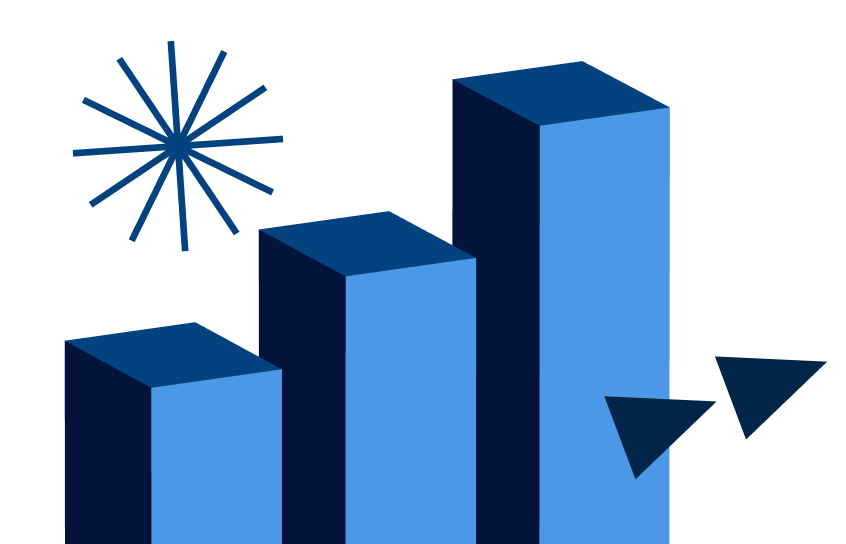What Is Supplemental Security Income (SSI)?
SSI assists people who qualify because of financial need, health and age.

Many, or all, of the products featured on this page are from our advertising partners who compensate us when you take certain actions on our website or click to take an action on their website. However, this does not influence our evaluations. Our opinions are our own. Here is a list of our partners and here's how we make money.
The investing information provided on this page is for educational purposes only. NerdWallet, Inc. does not offer advisory or brokerage services, nor does it recommend or advise investors to buy or sell particular stocks, securities or other investments.
SSI provides monthly income to people with limited resources and who are blind, disabled or 65 or older.
Eligibility is based on income, resources, resident status and if you are over 65 or have a disability.
Supplemental Security Income (SSI) is a monthly Social Security benefit for people with low incomes, limited resources and who are blind, disabled or 65 or older. The 2025 monthly maximum SSI benefit is $967 for individuals and $1,450 for couples. In 2026, the monthly maximum SSI benefit is $994 for individuals and $1,491 for couples.
Children who are blind or have disabilities may also qualify for SSI.
Unlike Social Security retirement and Social Security Disability Insurance (SSDI) benefits, SSI has no work-related requirements to qualify.
SSI income isn't taxable.
How much does SSI pay?
The SSA pays SSI benefits on the first of the month. If that date falls on a weekend or federal holiday, you’ll get your payment early.
The SSA sets the maximum SSI benefit each year. The amount increases in step with the SSA’s cost-of-living adjustment formula.
2025 monthly maximum SSI benefit | 2026 monthly maximum SSI benefit | |
|---|---|---|
Individuals living alone | $967 ($11,604.53 per year). | $994 ($11,929.46 per year). |
Individuals living in another household | $644.67 ($7,736.04 per year). | $663 ($7,953 per year). |
Couples living alone | $1,450 ($17,404.87 per year). | $1,491 ($17,892.21 per year). |
Couples living in another household | $966.67 ($11,600.04 per year). | $994 ($11,925 per year). |
SSI eligibility
To qualify for SSI, you must:
Have limited income.
Have limited resources.
Meet residency requirements.
Be 65 or older, blind or disabled.
Each of these qualifications has its own set of criteria. Take the quiz below to see if you're likely to meet the requirements for SSI benefits.
You have limited income
To qualify for SSI, your monthly qualifying income can’t exceed the largest monthly SSI benefit allowed during that year. To qualify in 2025 and 2026, typically you must make less than $2,019 per month in wages as a single person or less than $2,985 per month as a married couple and satisfy other eligibility requirements. The Social Security Administration may reduce your SSI benefit if you have income from other sources.
Total wages or net self-employment income | Income from pensions or gifts | Owned assets and resources | |
|---|---|---|---|
Individual | Less than $2,019 per month. | Less than $987 per month. | Less than $2,000 total. |
Couple | Less than $2,985 per month. | Less than $1,470 per month. | Less than $3,000 total. |
When calculating income, the SSA includes:
Earned income, such as from a job or self-employment.
Unearned income, such as Social Security retirement payments, pension income and dividends from investments, are also considered income. Unearned income typically reduces SSI benefits dollar for dollar. For example, $500 in monthly pension income could reduce your SSI benefit by $500.
Things or services you get for free or at a discount, including free or below-market rent, are considered income, even if you got them from family or friends. This kind of support, called in-kind support, can reduce SSI payments.
Income that a spouse, parent or other essential person with whom you live receives. If those people don't receive SSI, the SSA might reduce your SSI payments.
There are exceptions to what the SSA considers income for an SSI application. Resources and funds that generally aren’t considered income include:
Payments from assistance programs. This includes supplemental SSI payments from your state, SNAP benefits, Temporary Assistance for Needy Families (TANF), HUD (Section 8) housing assistance and rebates or refunds related to rent or property taxes.
Payments from tribal entities. Income does not include assistance provided to tribal members through a tribe or, in some cases, tribal trust fund payments.
Refunds, rebates and tax credits. Money that you receive as part of a rebate program, such as rental rebates and tax refunds, are typicallynot counted as income. Refundable tax credits received after Dec. 31, 2009, are also excluded.
Educational expenses. Income does not include money you receive to pay for educational expenses. Examples include scholarships, fellowships, grants and even monetary gifts that others give you to pay for school.
Loans. If you have to repay a loan, the value of the loan is not counted as income (because you’ll have to pay it back).
Disaster relief assistance. Funds that you receive for qualifying for disaster relief assistance do not count as income.
You have limited resources
The value of any cash, investments and personal property you own can’t exceed $2,000 as an individual or $3,000 as a couple. Resources include available cash or a bank account, as well as anything that can be turned into cash, such as stocks, bonds or property that can be sold.
Like with the income rules, there are exceptions. Common examples include a house you own (as long as you’re living in it), one vehicle and household goods.
You meet the residency requirement
To qualify for SSI, you must:
Be a U.S. citizen or national. There are some exceptions, including for some refugees.
Live in a U.S. state, Washington, D.C., or the Northern Mariana Islands.
Not leave the U.S. for more than a calendar month or 30 consecutive days.
You are at least 65 or have a disability
You must meet at least one of these conditions.
You are 65 years old or older.
You are blind. The SSA defines blindness as your better eye having 20/200 or less in central visual acuity with a corrective lens or a limited visual field to the point of the widest diameter of vision being no more than 20 degrees.
You have a qualifying disability. The SSA defines a disability as a physical, mental, emotional or learning impairment that is likely to last for at least one year or can be expected to lead to death. If you are younger than 18, the disability must severely limit your ability to function. If you are 18 or older, the disability must prevent you from finding substantial gainful activity.
Some people cannot receive SSI benefits even if they meet all of the qualifications. Examples include people who have certain arrest or unsatisfied felony warrants, are currently in jail or prison, are committed to a public institution or are out of the country for 30 days or more.
How are SSI payments calculated?
The size of a person's monthly SSI benefits is based on their countable income and whether they live in a state that pays its own additional benefits. The less income and fewer resources someone has, the closer their SSI payment will be to the maximum amount. If an applicant makes more money than the maximum income limit, they will not qualify for SSI assistance.
When calculating monthly income, the SSA excludes the first $20 of income, regardless of whether it’s earned or unearned income — and when calculating monthly earned income, the SSA excludes the first $65 from your monthly earnings, such as your paycheck.
After deducting these amounts, the SSA divides your total income by half. The result is your countable income for calculating SSI, which reduces your monthly benefit dollar for dollar.
In other words, every dollar of countable income is a dollar that is subtracted from your SSI payment.
Use the calculator below to estimate your monthly SSI benefit based on your income.
» MORE: How much will SSI checks be?
What other benefits can I get with SSI?
Food assistance. SSI beneficiaries may also qualify for food assistance programs. Some states automatically review SSI applications to determine if an applicant can also receive assistance, such as Supplemental Nutrition Assistance Program (SNAP).
State supplemental benefits. Many states have programs that provide additional amounts, called supplements, to SSI recipients. In some states, the SSA administers these additional payments. Qualifications and details for those programs vary by state.
SSI application process
You can apply for SSI online or by phone; in some cases, you can apply in person. To apply online, go to SSA.gov and answer a series of questions. You’ll have to submit supporting documents to complete your application. To apply in person, call 800-772-1213 (TTY 800-325-0778) to schedule an appointment. The SSA agent will schedule your appointment and let you know if you need to come in person or can do it over the phone. You can check your application’s status online as well.
The SSA will send you a letter to tell you if you’ve been approved for benefits.
You may need to provide the following information when applying for SSI:
Your Social Security number.
The city, state and country in which you were born.
Proof of income, such as pay stubs, tax returns, pension or retirement statements, alimony and child support agreements and disability payments.
Proof of resources, such as bank statements, dividend or stock values, vehicle titles, loan statements and life insurance policies.
Information about your living arrangements, including proof of ownership if you own your home or your landlord’s information if you are renting and a rental contract.
Information about marriages, such as current and former spouses’ names, Social Security numbers and dates of marriages and divorces.
Banking information for direct deposit of benefit payments.
You do not have to have a bank account to receive SSI benefits. A prepaid debit card is also available.








